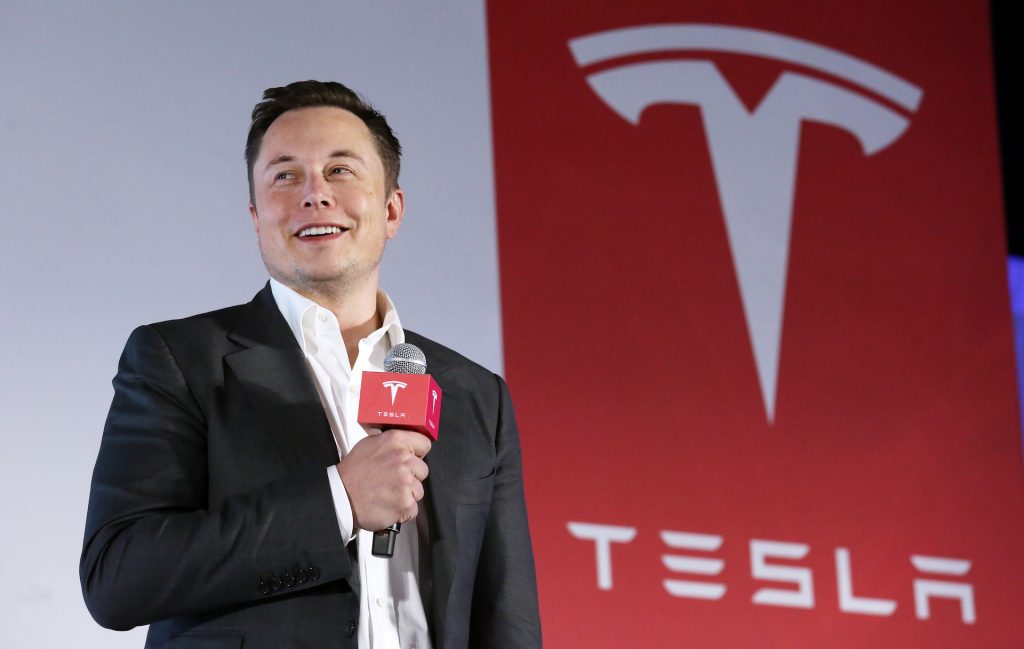
The success secrets of Elon Musk that enable him to make his grandest goals, dreams and desires a reality. What you can learn from his success secrets and principles that you can apply right now in your own life to start getting even better results than you may already be achieving with your current life success strategies.
We trace Musk’s humble beginnings growing up in South Africa and dreaming of one day moving to America to chasing his dreams, becoming a billionaire and one of the most successful entrepreneurs and visionaries the world has ever seen in modern times.
We examine his success mindsets, belief systems and life strategies to not only embrace pain and failure so you can learn from it and improve, but to endeavor to cause even more failures to happen. How this speeds up your learning curve and helps you to achieve your goals in a shorter period of time. Embracing failure as a gift and essential teacher.
Elon Musk has been described as a real life Tony Stark — a billionaire entrepreneur with an uncanny ability to turn science fiction into reality. Fueled by a drive to make the world better, Musk took on banking, aerospace and automobiles and transformed all three industries, revolutionizing secure internet transactions, electric cars and reusable rockets. But his greatest triumphs were almost failures.
The secrets to his success are an ability to identify and focus on problems that need to be solved — the continuous reassessment of how to do things better — and the will to keep going and take action when the odds are stacked against him.
“My mentality is that of a Samurai. I would rather commit seppuku than fail.” ~ Elon Musk
Growing up in Pretoria, South Africa, Elon Musk was a nerdy kid who escaped bullying by reading everything he could get his hands on, including the entire Encyclopedia Brittanica. Instead of wallowing in self-pity, he accumulated knowledge.
“You don’t know what you don’t know. You realize there are all these things out there.” ~ Elon Musk
By the time he was 12, Musk had taught himself to code and created a computer game that he sold for $500.
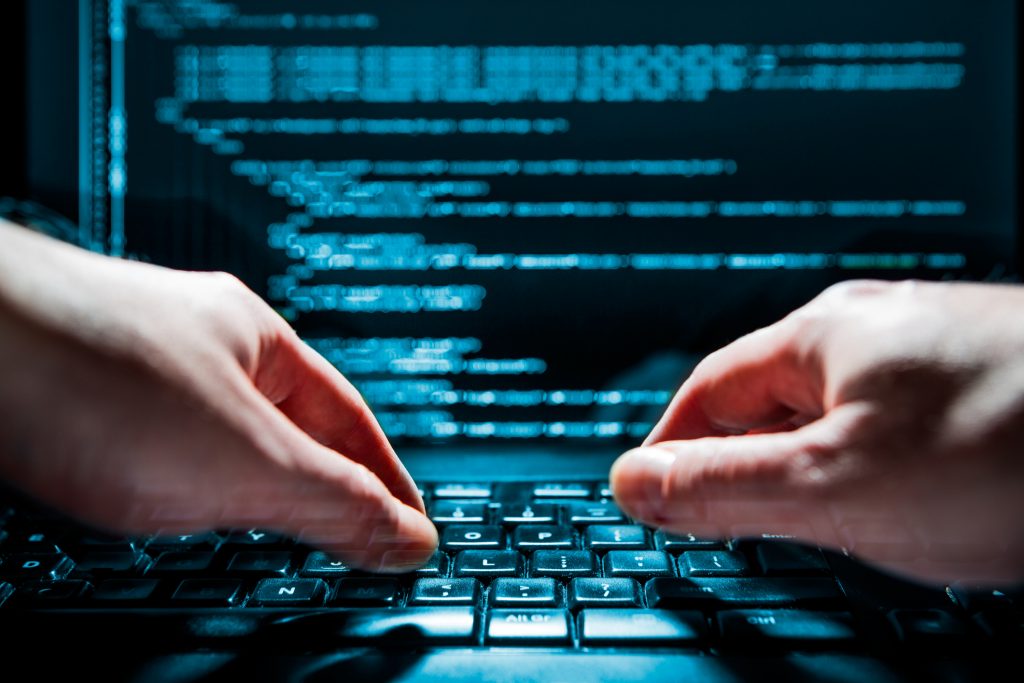
“To make an embarrassing admission, I like video games. That’s what got me into software engineering when I was a kid. I wanted to make money so I could buy a better computer to play better video games – nothing like saving the world.” ~ Elon Musk
Living in the darkness of apartheid-era South Africa, Musk wanted to escape mandatory service in the South African military. At age 17, he flew to Canada and enrolled at Queens University. But his real goal was to come to the U.S.
“I remember thinking and seeing that America is where great things are possible, more than any other country in the world.” ~ Elon Musk
Musk transferred to the University of Pennsylvania, where he earned Economics and Physics degrees. He won a scholarship for graduate studies at Stanford, arriving in Silicon Valley at the height of the internet boom. After two days of class, he dropped out to pursue his first serious business venture.
In 1995, Musk and his younger brother, Kimbal, started Global Link Information Network with $2000 and an idea to bring newspapers into the computer age by creating web-based city guides. At the time, the idea of advertising on the internet was considered ridiculous, but the Musk brothers had a clear vision and set out to make it reality.
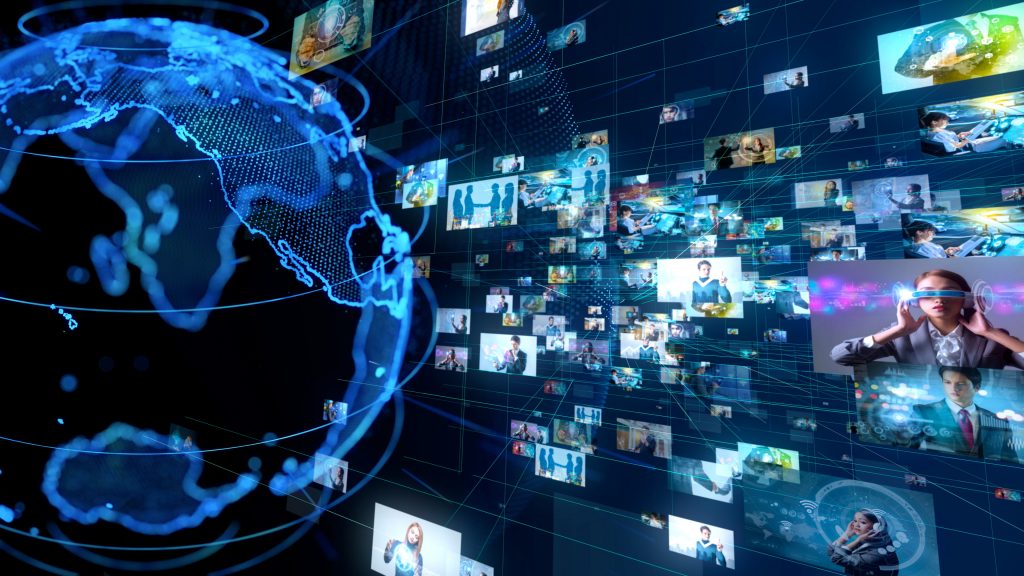
“The first step is to establish that something is possible; then probability will occur.” ~ Elon Musk
In college, Musk knew he wanted to be an entrepreneur and had practiced living on a dollar a day. Now, he put it to the test. For the first few months, the brothers showered at the YMCA and lived in the office. When they rented office space, they continued living like broke college students. Musk slept next to his desk and survived on fast food as they took the company from proof of concept to actual product. Working around the clock, Musk improved the code to stay ahead of competition.
“We’re going to make it happen. As God is my bloody witness, I’m hell-bent on making it work.” ~ Elon Musk
Global Link secured $3M in angel investment and changed its name to ZIP2, but it came at a price — Musk was forced to give up control. In 1999, 4 years after the company’s founding, Compaq Computer bought ZIP2 for $307M, the largest sum ever paid for an internet company at the time. Elon would earn $22M from the deal and buy a McLaren with some of the money, but his business career was just getting started.
“I don’t think it’s a good idea to plan to sell a company.” ~ Elon Musk
Musk had gained confidence and learned a valuable lesson — that investors would be unlikely to share his vision. From then on, he would fight hard to maintain control of his companies.
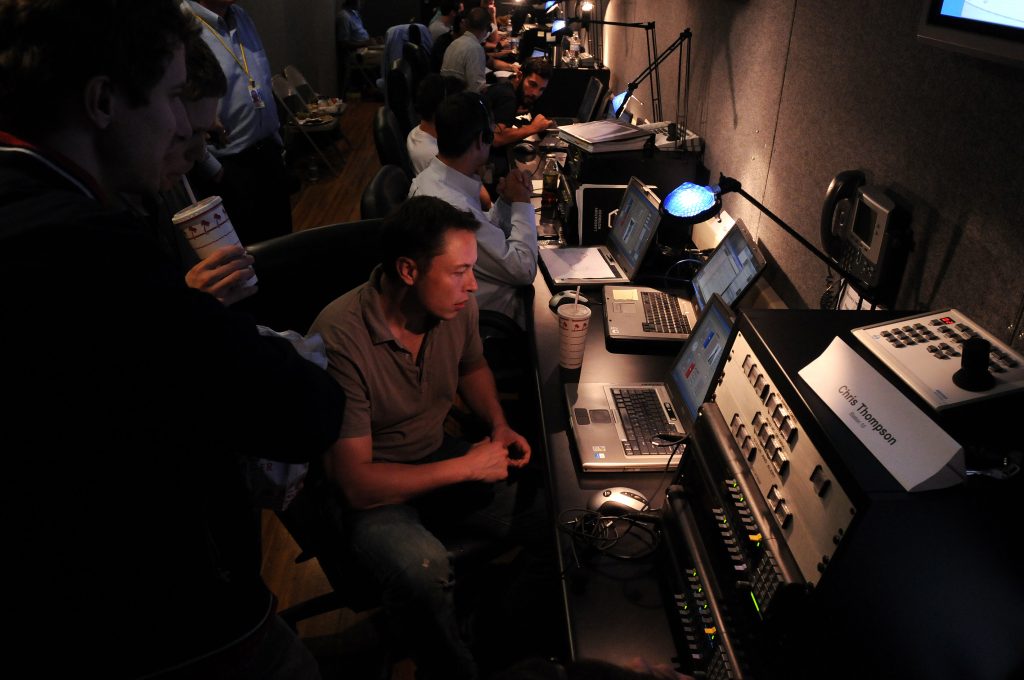
As a boy, Musk was inspired by Isaac Asimov’s Foundation book series, which convinced him to focus on things that are “likely to prolong civilization, minimize the probability of a dark age and reduce the length of a dark age if there is one”. Now he had his own capital and wanted his next venture to change the world.
“I’m interested in things that change the world or that affect the future — and wondrous, new technology where you see it, and you’re like, ‘Wow, how did that even happen? How is that possible?” ~ Elon Musk
Musk plowed $10M into creating X.com, an online bank to enable secure electronic payments. It would be Musk’s first attempt to upend an entrenched industry. Five months in, he clashed with one of his key hires who disagreed with Musk’s vision of remaking the banking industry. When the employee left and took most of X.com’s engineers, Musk had to build a new team. But he learned another valuable lesson — the importance of having a great team and a good feedback loop.
“Talent is extremely important. It’s like a sports team, the team that has the best individual player will often win, but then there’s a multiplier from how those players work together and the strategy they employ.” ~ Elon Musk
“Really pay attention to negative feedback and solicit it, particularly from friends. … Hardly anyone does that, and it’s incredibly helpful.” ~ Elon Musk
As Musk pushed his idea forward, an intense rivalry developed with Peter Thiel’s Confinity that had a competing service called Paypal. In 1999, PayPal’s big idea had been to send money from one PalmPilot to another — an idea ranked in the top ten worst business ideas of the year. But by 2000, both companies were focused on sending money by email and locked in a heated competition when they decided to merge and join forces.
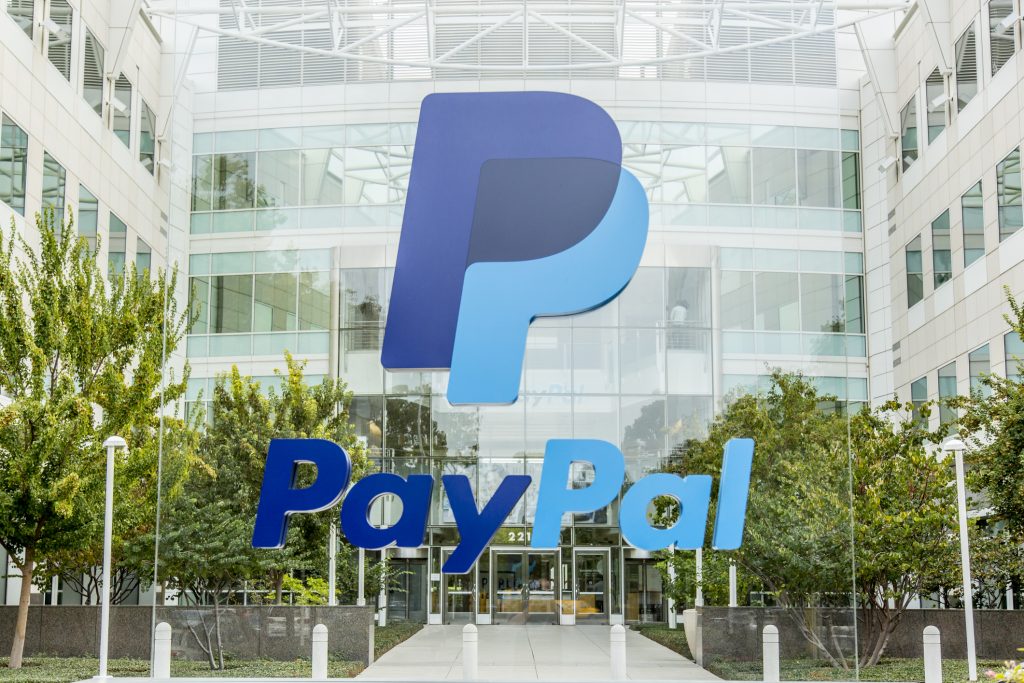
Musk became the biggest shareholder and CEO of the new company —PayPal. But a culture clash quickly erupted over the choice of operating system. Musk wanted to use Microsoft, while his opponents preferred Linux. What came next was one of the nastiest coups in Silicon Valley history.
While Musk was on a honeymoon trip with his wife, he was ousted as CEO and Peter Thiel took over. Musk was sidelined and his reputation tarnished. But he was still PayPal’s biggest shareholder and handled the setback with maturity and measure. He continued serving as an adviser and investing in PayPal, working with Thiel to make sure his ideas were implemented. Two years later, eBay bought PayPal for $1.5B, netting Musk $180M after taxes.
“Based in large part on Musk’s guidance, PayPal survived the bursting of the dot-com bubble, became the first blockbuster IPO after the 9/11 attacks, and then sold to eBay for an astronomical sum while the rest of the technology industry was mired in a dramatic downturn.” ~ Ashlee Vance, excerpt from “Elon Musk – Tesla, SpaceX and the Quest for a Fantastic Future”
PayPal was transforming the financial industry, changing how people transfer money and buy things — but it fell short of Musk’s vision to create “one online bank to rule them all.” Now that Musk had serious start-up capital, he set his sights on bigger problems.
“People should pursue what they’re passionate about. That will make them happier than pretty much anything else.” ~ Elon Musk
Inspired by boyhood fantasies of space exploration, Musk joined the Mars Society, a group of space enthusiasts committed to settling the red planet. While visiting NASA’s website, Musk was shocked to find no plan for sending humans to Mars. He viewed America as the distillation of humanity’s spirit of exploration and wanted to inject that spirit back into America’s space program. He conceived a project called “Mars Oasis” that would send a miniature greenhouse to Mars to grow plants, and help reignite the public’s interest in space exploration.
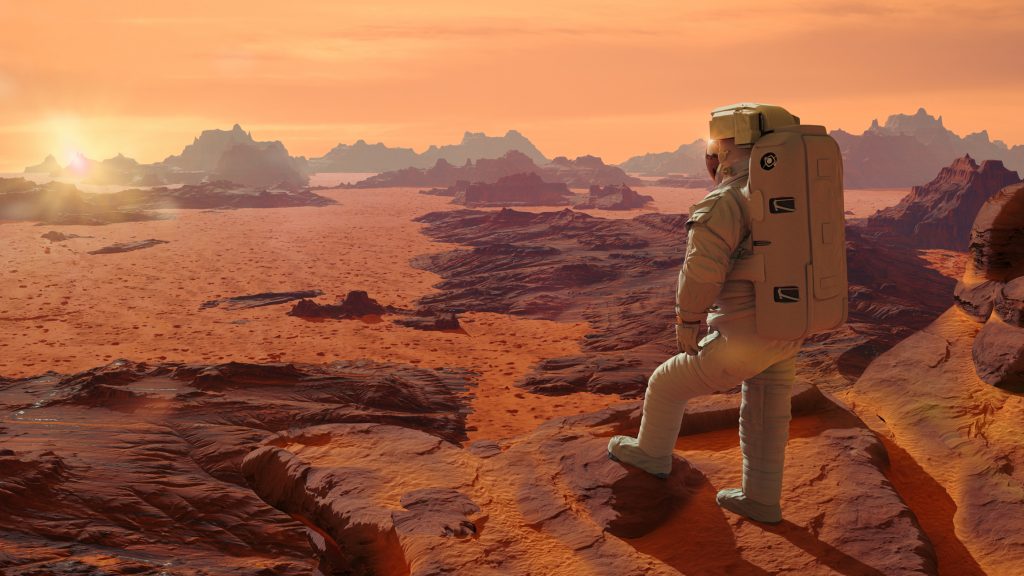
“You want to wake up in the morning and think the future is going to be great — and that’s what being a spacefaring civilization is all about. It’s about believing in the future and thinking that the future will be better than the past. And I can’t think of anything more exciting than going out there and being among the stars.” ~ Elon Musk
Musk made two exploratory trips to Russia to look into buying cheap rockets. The meetings went poorly, with the Russians mocking Musk and trying to rip him off.
“They looked at us like we were not credible people. One of their chief designers spit on me and Elon because he thought we were full of shit.” ~ Jim Cantrell, SpaceX Engineer
Musk came back empty-handed, but the trips informed him that rocket technology hadn’t really improved since the 1960s. Musk thought he might be able to build affordable rockets himself. After penetrating the many layers of contractors, subcontractors and sub-subcontractors to speak directly to the engineers and fabricators who actually made physical rocket parts, he calculated the raw material cost to build a rocket was only about 3% of the sales price.
Musk discovered the cost of rockets was driven up unnecessarily by paper-pushers and bureaucrats who didn’t actually make anything. By building most of the launch hardware in-house and cutting out layers of contractors and subcontractors who only added to the overhead, he believed he could reduce the launch cost by a factor of 10.
“I think its important to reason by first principles rather than by analogy. The normal way we conduct our lives is we reason by analogy, we are doing this because it’s like something else that was done, or it is like what other people are doing. With first principles you boil things down to the most fundamental truths, the raw materials… and then reason up from there.” ~ Elon Musk
Convinced private enterprise could boost space exploration, Musk founded SpaceX in 2002 with $100M of his own capital. People thought he was throwing his money away, but as the sole funder of the company, he believed he would be able to hold onto the reins of power as the company grew.
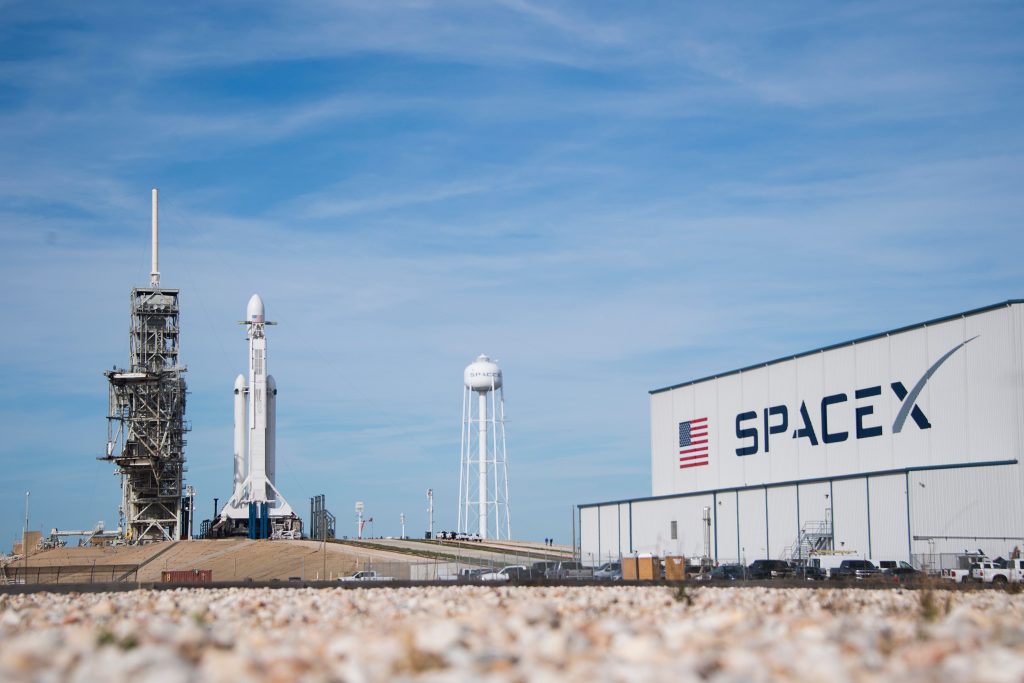
“I always invest my own money in the companies that I create. I don’t believe in the whole thing of just using other people’s money. I don’t think that’s right. I’m not going to ask other people to invest in something if I’m not prepared to do so myself.” ~ Elon Musk
Musk assumed all the risk and immersed himself in learning rocket science and figuring out how to improve existing “off the shelf” technology to build rockets for a fraction of the cost.
“If we drive down the cost of transportation in space, we can do great things.” ~ Elon Musk
Musk was driven by a deep conviction that advancing space exploration was a crucial step in preserving and expanding human life. He thought humanity had to become a multi-planetary species for our long term survival.
“An asteroid or a super volcano could destroy us, and we face risks the dinosaurs never saw: an engineered virus, inadvertent creation of a micro black hole, catastrophic global warming or some as-yet-unknown technology could spell the end of us. Humankind evolved over millions of years, but in the last sixty years, atomic weaponry created the potential to extinguish ourselves. Sooner or later, we must expand life beyond this green and blue ball—or go extinct.” ~ Elon Musk
Musk’s next big idea came while attending the Burning Man festival in Nevada’s Black Rock desert. He decided to focus on ending humanity’s reliance on fossil fuels, and funded Solar City a company that would build solar cells and lease them to consumers with no money down. But Solar City was only part of a more ambitious plan that would include electric cars.
Musk co-founded Tesla Motors, with a goal to revolutionize the auto industry by creating electric cars that people actually desired. Musk laid out Tesla’s master plan in 2006 — to build a high performance electric sports car as a proof of concept — then use the success to build an affordable car platform — and use the profits from that money to build an even more affordable car — and while doing the above, to also provide zero-emission electric power generation options.
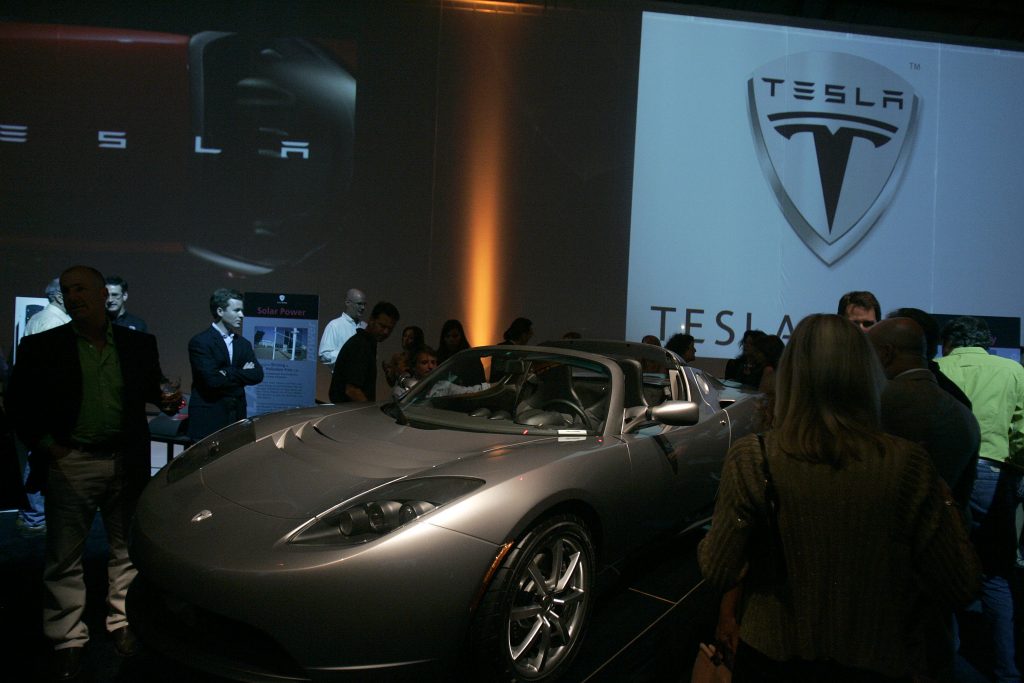
“Solar city is about sustainable energy creation, whereas Tesla’s about sustainable energy consumption.” ~ Elon Musk
One of Tesla’s big challenges was to create a high efficiency power source to extend the range and performance of electric cars. Musk solved the problem by taking large numbers of high-energy computer battery cells, and safely combining them into a large battery. Tesla’s sports car — the Tesla Roadster — was rolled out in 2008.
“I think anyone who likes fast cars will love the Tesla. And it has fantastic handling by the way. I mean this car will crush a Porsche on the track, just crush it. So if you like fast cars, you’ll love this car. And then oh, by the way, it happens to be electric and it’s twice the efficiency of a Prius.” ~ Elon Musk
Tesla had reached its first milestone, but 2008 would prove to be a critical test for Musk. Both Tesla and SpaceX were burning through cash as the world economy suffered a historic meltdown.
From a launch site in the South Pacific, SpaceX’s first three launches of the Falcon 1 rocket had all failed, with the rockets blowing up before reaching orbit. The third launch was especially painful because the rocket was carrying Air Force and NASA satellites. Musk tried to reassure his employees, telling them, “For my part, I will never give up. And I mean never.” But the reality was, SpaceX only had funds for one more launch. If the 4th launch failed, SpaceX was finished. To make matters worse, Tesla was running out of money and having trouble raising more, while falling short in filling orders for its sports car.
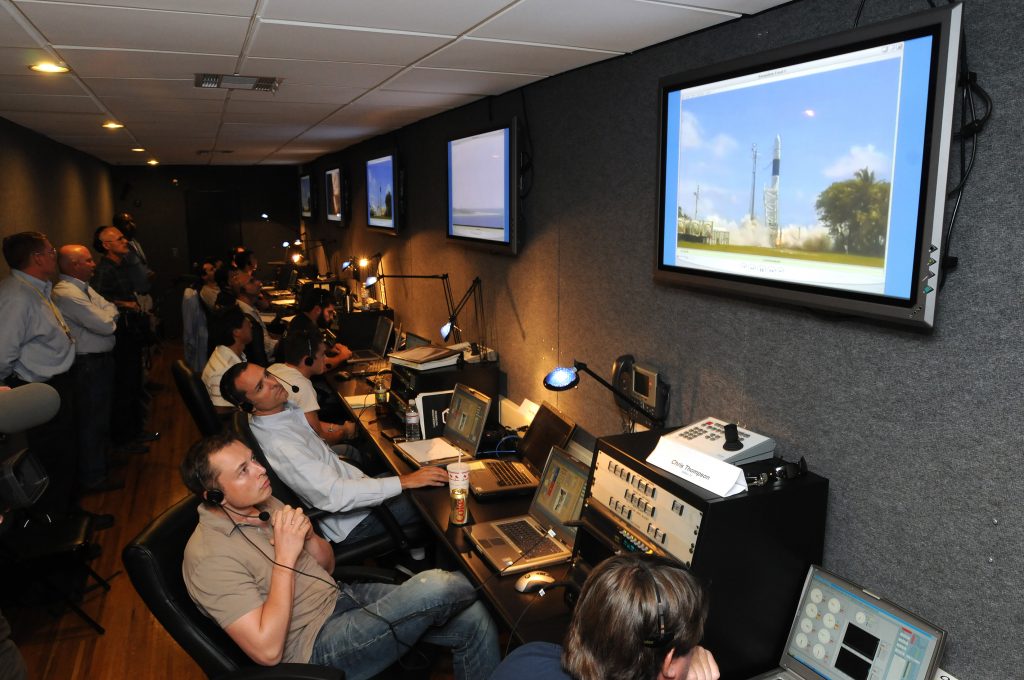
“The Tesla financing round was falling apart because it’s pretty hard to raise money for a startup car company if GM and Chrysler are going bankrupt.” ~ Elon Musk
With everything hanging in the balance, Musk would now face his greatest challenge. As Musk confronted financial ruin and the potential failure of both of his companies, he doubled-down on his basic principles. He figured out how much money he needed to survive and plowed his remaining capital into his companies. He slept at the office, making himself available 24-7 to solve problems and quickly terminating employees who weren’t measuring up.
“Work like hell. I mean you just have to put in 80 to 100 hour weeks every week. This improves the odds of success.” ~ Elon Musk
With everything on the line and Musk about to suffer a nervous breakdown, SpaceX’s 4th launch of the Falcon 1 was a success.
“There were a lot of people who thought we couldn’t do it — a lot actually — but as the saying goes, ‘the 4th time is the charm, right?” ~ Elon Musk
But the afterglow quickly faded as SpaceX faced its next challenge of needing to construct the Falcon 9 rocket and Dragon capsule projects simultaneously. Each project would normally cost in excess of $1B, but SpaceX had to build them both at a fraction of the cost.
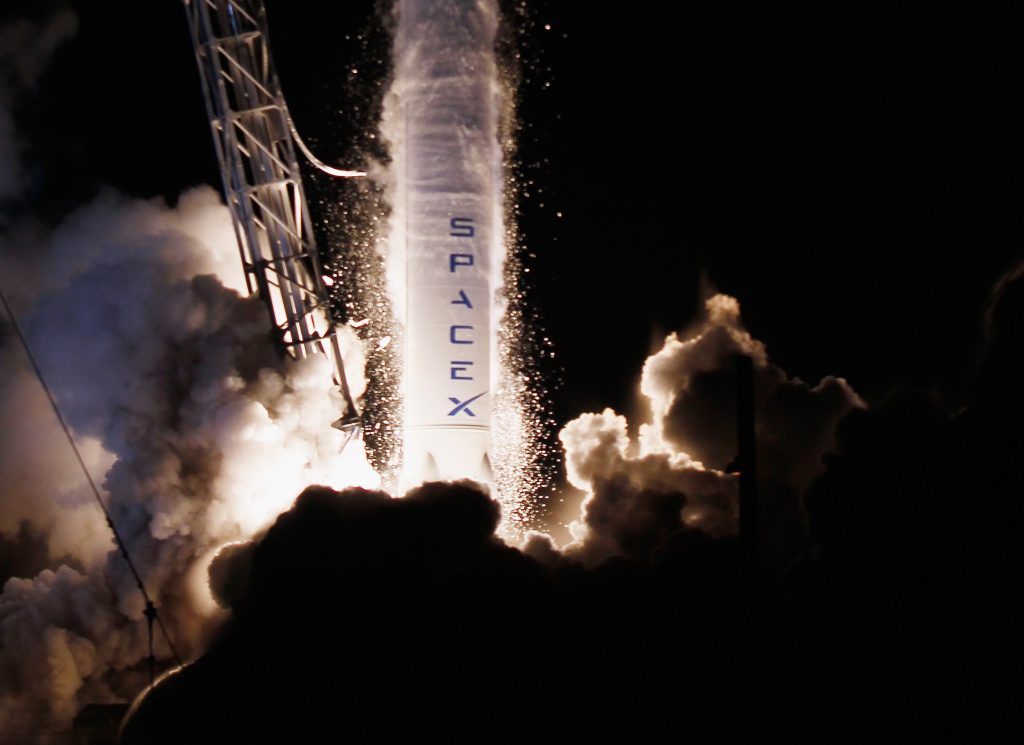
Meanwhile, Tesla was burning through $4M a month and needed another round of funding to stay alive. Musk begged and borrowed from friends and employees just to make payroll. Some Tesla employees even wrote checks to keep the company going.
“If you’re co-founder or CEO, you have to do all kinds of tasks you might not want to do… If you don’t do your chores, the company won’t succeed… No task is too menial.” ~ Elon Musk
It was do or die as Musk made a last ditch effort to save both companies. He heard NASA was awarding a contract to resupply the international space station and began talking up SpaceX’ s potential. Because the 4th launch had succeeded, SpaceX was in the running. At Tesla, Musk cobbled together $20M, borrowing money from SpaceX and asking his existing investors to match it.
“Being an entrepreneur is like eating glass and staring into the abyss of death.” ~ Elon Musk
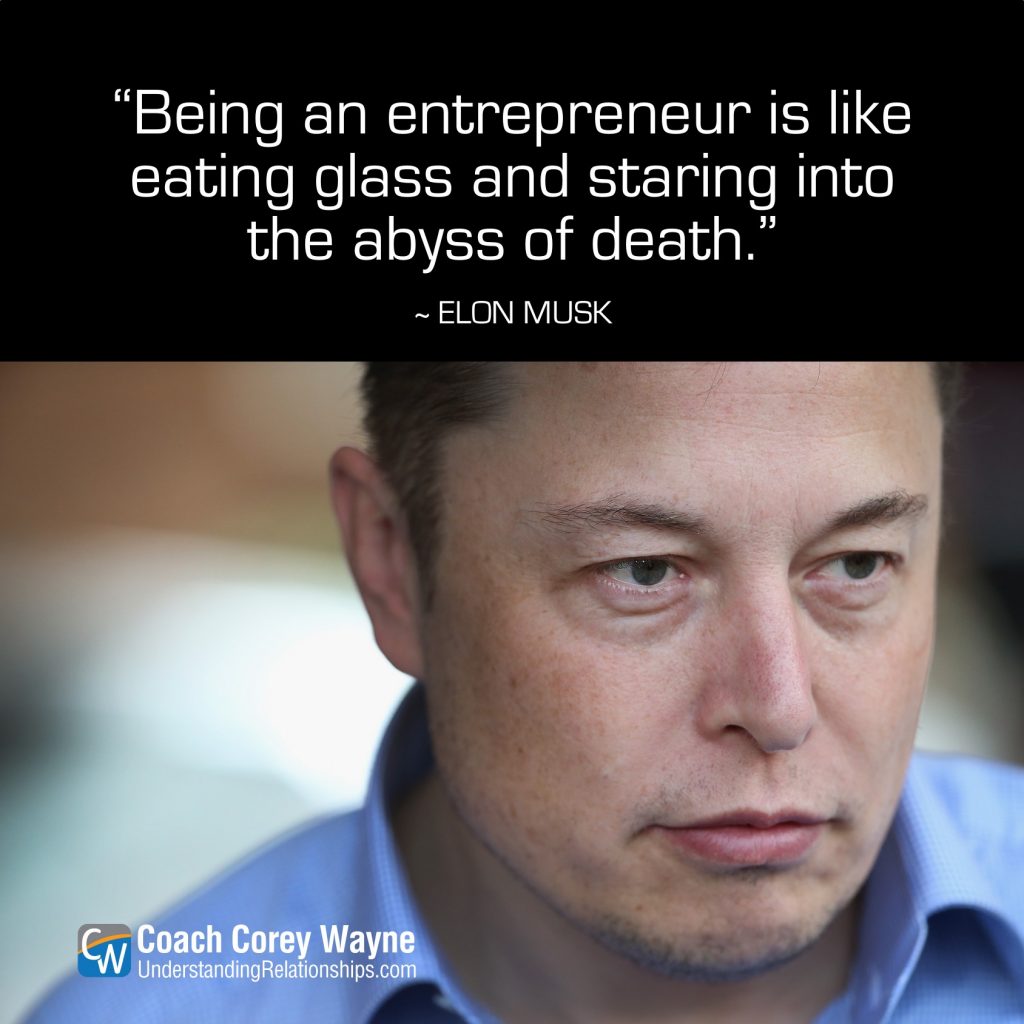
As 2008 drew to a close, Musk faced financial ruin at SpaceX and Tesla, but his tenacity was about to pay off. On December 23, 2008, NASA awarded SpaceX a $1.6B contract to help resupply the international space station — the first time NASA had ever contracted for cargo delivery flights to space. The next day, Tesla closed a deal for $40M of convertible debt financing from existing investors, hours before the company would have missed payroll.
“Most people who are under that sort of pressure fray. Their decisions go bad. Elon gets hyper-rational. He’s still able to make very clear long term decisions. The harder it gets, the better he gets. Anyone who saw what he went through first-hand came away with more respect for the guy. I’ve just never seen anything like his ability to take pain.” ~ Antonio Gracias, Tesla and SpaceX investor
2008 ended up a watershed year for Tesla and SpaceX with both companies pulled back from the brink of disaster and Musk managing to stay in control. But the tough times weren’t over. As Tesla attempted to execute step 2 of its plan — creating a premium mass market sedan, the Model S — the cost of production skyrocketed. Tesla was running out of money again and Musk’s critics were ready to write its obituary.
“It’s wonderful that Musk has realized even a small part of his childhood fantasies, but he risks destroying his dreams by refusing to reconcile them with reality.” ~ Owen Thomas, Valleywag Magazine
To drum up business for Tesla’s battery technology, Tesla’s engineers converted a Mercedes “Smart Car” to electric to show Daimler-Benz the potential. The demonstration secured Tesla a $40M deal with Daimler-Benz to provide smart car batteries and prompted the German automaker to purchase a 10% stake in Tesla in 2009. The same year, Tesla got an even bigger break with a US government loan of $465M to support mass production of the Model S.
Musk located an unused Toyota factory in Fremont, California and struck a deal with the Japanese automaker to buy the factory at a significant discount. In addition, Toyota agreed to take a $50M stake in Tesla in return for collaborating on an electric version of the RAV4. The funds were used to purchase the factory and create a high tech robotic assembly line for the Model S.
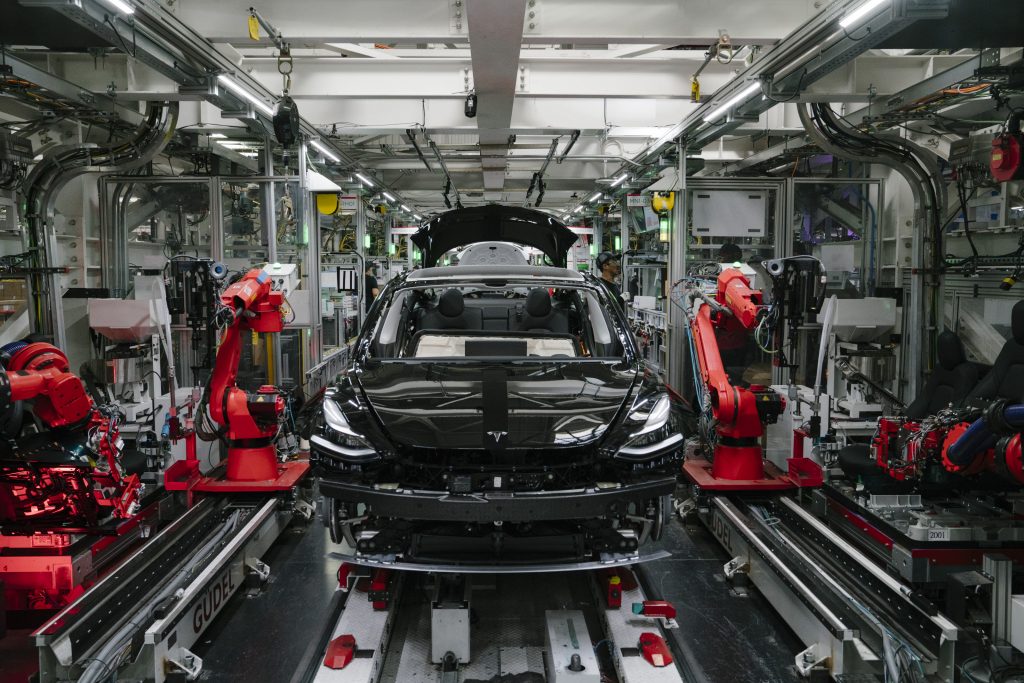
After going public in June 2010 and raising $220M, Tesla was voted by Wall Street as the company least likely to succeed and was savaged in a NY Times hit piece that was highly critical of the Model S after a test drive. Musk pushed back, using the vehicle’s computer data to prove the article wrong and forcing the NY Times to admit it.
“The holier-than-thou hypocrisy of big media companies who lay claim to the truth, but publish only enough to sugarcoat the lie, is why the public no longer respects them.” ~ Elon Musk
To repair the damage the NY Times article caused to Tesla’s reputation, Musk promised Model S buyers would enjoy free lifetime charging and guaranteed the car would retain its value. When the Model S finally rolled off the assembly line, it became the first electric sedan to be named Motortrend’s car of the year and exceeded all sales expectations — enabling Tesla to repay the US taxpayer 9 years ahead of schedule and with a $20M profit.
Meanwhile, SpaceX became the first private company to send a cargo payload to the International Space Station and was making major strides towards Musk’s goal of reducing the cost of human spaceflight by a factor of 10.
“SpaceX was the first purely commercial ground up development to reach orbit.” ~ Elon Musk
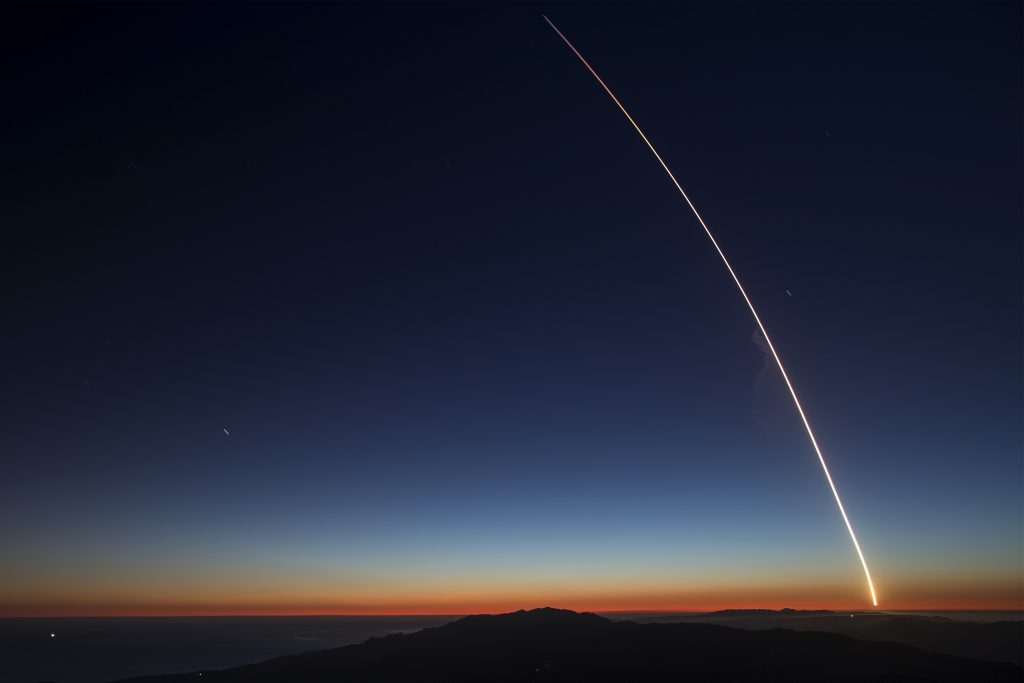
But there were still major obstacles to overcome. Between 2013 and 2016, SpaceX suffered multiple rocket failures on launch and while trying to land on a drone ship at sea, including a rocket that blew up with $300M worth of Facebook satellites on board.
“There’s a silly notion that failure’s not an option at NASA. Failure is an option here. If things are not failing, you are not innovating enough.” ~ Elon Musk
At Tesla, the Model S suffered a series of spontaneous battery combustions and delivery of the Model X SUV was delayed by 18 months. Despite the setbacks, Musk pressed on, continuing to apply his formula to work through problems.
“Persistence is very important. You should not give up unless you are forced to give up.” ~ Elon Musk
In 2016, Tesla released part 2 of its master plan — to create stunning solar roofs with seamlessly integrated battery storage — to expand the electric vehicle product line to address all major segments, including a small SUV and pickup truck — to develop a self-driving capability that is 10X safer than manual via massive fleet learning — and to enable your car to make money for you when you aren’t using it.
Solar City was merged into Tesla as Musk laid out an ambitious plan for renewable energy that could end the world’s dependence on fossil fuel and enable a transition to solar power.
“The sun is a giant fusion reactor in the sky. It’s really reliable. It comes up every day. If it doesn’t, we’ve got bigger problems.” ~ Elon Musk
Musk envisioned creating virtual power plants that combined rooftop solar panels and home storage batteries with utility sized solar plants to create a virtual power grid. The idea was to utilize a combination of the “Tesla Powerwall”, its home storage battery — and the “Tesla Powerpack”, its utility scale product that used fields of solar panels and car-sized batteries to generate and store solar energy.
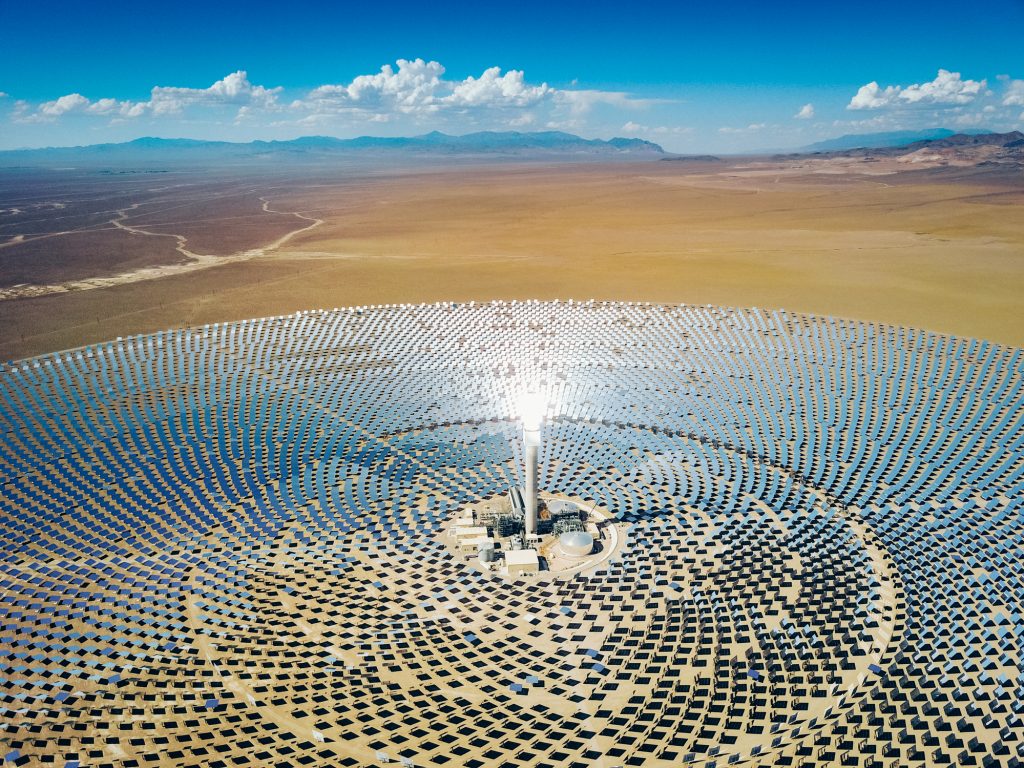
“If you wanted to power the entire United States with solar panels, it would take a fairly small corner of Nevada or Texas or Utah; you only need about 100 miles by 100 miles of solar panels to power the entire United States… The batteries you need to store the energy, so you have 24/7 power, is 1 mile by 1 mile. One square-mile.” ~ Elon Musk
Tesla is already testing the idea in South Australia by combining arrays of solar panels with Tesla Powerwalls installed in up to 50,000 homes, to handle surge power demand during summer months when everyone runs their air conditioners.
“If you have a great solar roof, and you have a battery pack in your house, and you have an electric car, that scales worldwide. You can solve the whole energy equation with that.” ~ Elon Musk
Slowly but surely, Tesla was creating Musk’s vision — to have clean and renewable sources of energy feeding the grid that all our vehicles will run off. Solar City became a major solar energy provider as Tesla consolidated and ramped up battery production by building massive gigafactories and a network of solar-powered recharging stations across the country.
“Solar power will be the single largest source of electricity generation by the mid-point of the century.” ~ Elon Musk
With SpaceX, Musk had always believed making space travel affordable required making rockets reusable — something space industry experts claimed was impossible. In 2018, Musk proved them wrong when SpaceX began reusing boosters from its Falcon 9 and Falcon Heavy rockets, overcoming a major obstacle on the path to Mars.
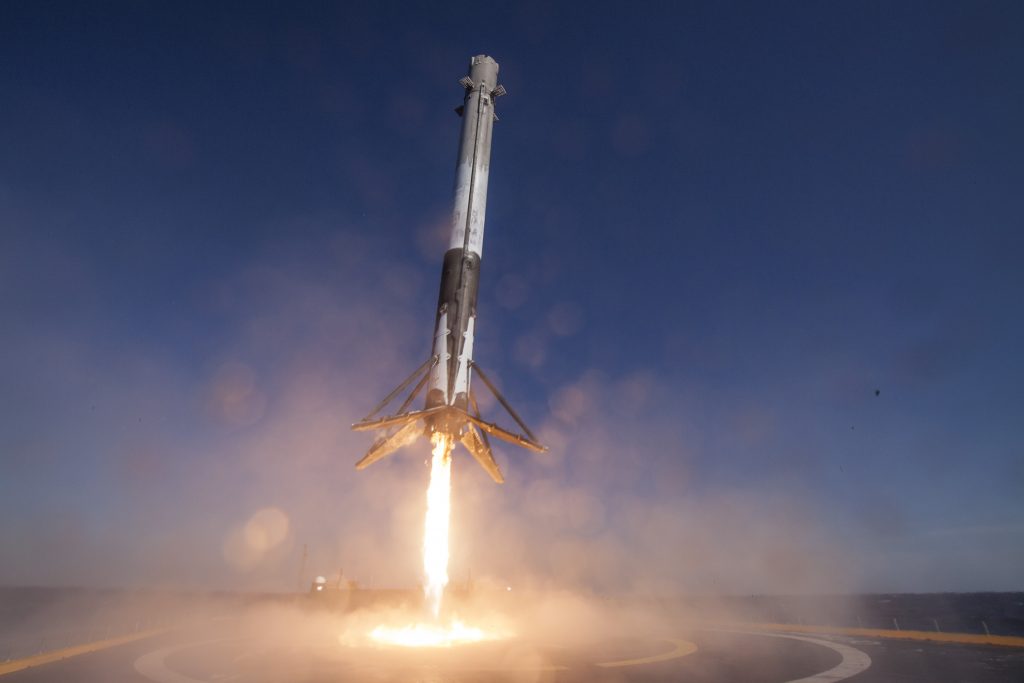
SpaceX also developed its own spaceport in south Texas and is working with NASA to launch astronauts from US soil to the International Space Station for the first time since the Space Shuttle program was shut down 10 years ago.
SpaceX has even begun a program called Starlink to launch a constellation of small satellites into low Earth orbit to provide satellite internet access to the world. As for Mars, SpaceX hopes to send its first cargo mission there in 2022 and a crewed mission to Mars in 2024 to build a propellant depot and prepare for future crew flights.
While none of Musk’s successes came without overcoming major failures, with SpaceX and Tesla, he is steadily forging his vision of the future — to help humanity reduce global warming through sustainable energy production and consumption — and to reduce the risk of human extinction by establishing a colony on Mars.
“When I was in college, I tried to think about, well what are the areas that would most effect the future of humanity. So the three things were the internet, making life multi-planetary and the third thing being, sustainable energy. So that’s what really ties together my companies.” ~ Elon Musk
But Musk hasn’t limited his vision to the stars and electric cars. He’s also focused on making sure Artificial Intelligence is beneficial to humanity.
“I’m very close to the cutting edge in AI and it scares the hell out of me. It’s capable of vastly more than almost anyone knows, and the rate of improvement is exponential.” ~ Elon Musk
In 2015, Musk created “OpenAI”, an independent research organization dedicated to “discovering and enacting the path to safe artificial intelligence.” With OpenAI, Musk aims to democratize AI and make it safe and beneficial for humanity. By making AI available to everyone, he hopes to stop large corporations from monopolizing AI systems for profit, and to prevent governments from using AI to oppress their citizens.
“We have to figure out some way to insure that the advent of digital super-intelligence is one which is symbiotic with humanity. I think that’s the single biggest existential crisis that we face and the most pressing one.” ~ Elon Musk
In 2016, Musk co-founded Neuralink, a company dedicated to creating brain chips that will help humans merge with AI to improve our memory and enable the human brain to directly interface with computing devices. A robot implants electrodes in the brain that’s connected to a bluetooth enabled computer embedded in the skull.

Elon Musk says that Neuralink’s brain computer implant will help repair brain damage and disorders, healing people who suffer from strokes, paralysis, Epilepsy, Alzheimer’s disease, loss of eyesight due to optic nerve damage and many other debilitating health problems.
After wasting too much time in L.A. traffic, Musk even came up with an idea to end traffic congestion — a high-speed transport system known as the Hyperloop, that could move people and cargo at super fast speeds with very little energy use.
“One of the most soul-destroying things is traffic. It affects people in every part of the world. It takes away so much of your life.” ~ Elon Musk
Musk open-sourced the idea, encouraging other entrepreneurs to develop it further. For his part, Musk built a sub-scale test track for a Hyperloop pod design competition at SpaceX headquarters, incorporating drive-up car elevators at street level to lower cars onto electric sleds that travel through the tunnels at high speed.
And in 2016, Musk founded “The Boring Company” to build tunnels with an aim to decrease the cost of tunneling and help make the Hyperloop economically feasible. The Boring Company has already secured contracts to build tunnels between Baltimore and Washington DC, and in Chicago and Las Vegas
“When something is important enough, you do it even if the odds are not in your favor.” ~ Elon Musk
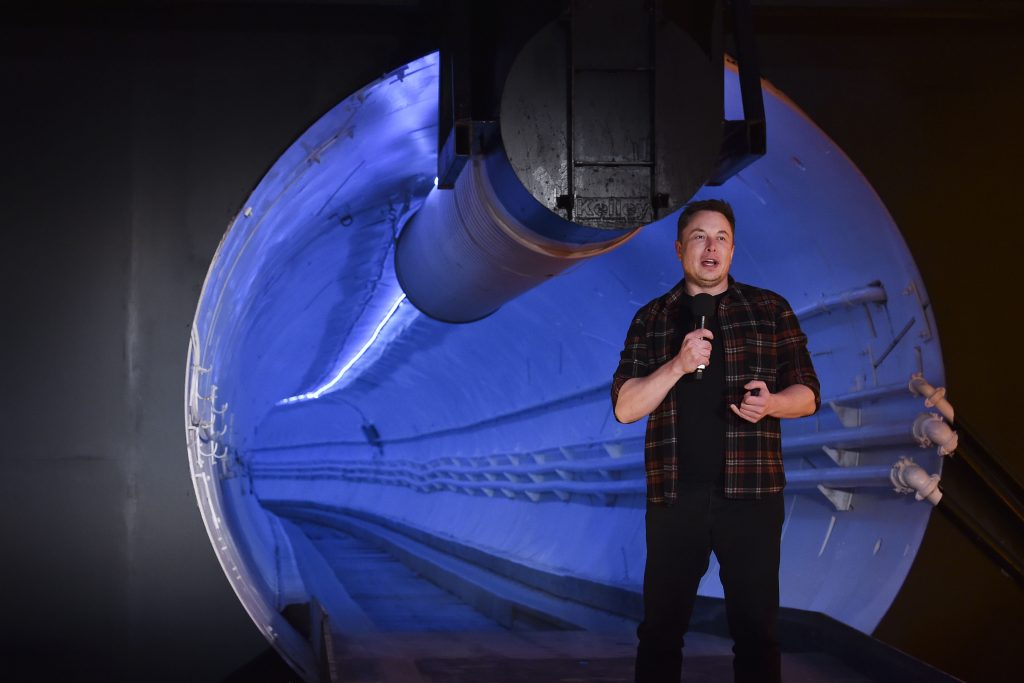
At 48 years old, Elon Musk has already revolutionized electronic transactions, electric cars, rocket launches and solar power. With OpenAI, Neuralink and the Boring Company, he’s taking on more of humanity’s most complex problems. When asked for the best advice he’d give others trying to emulate his success, Musk tells people to find out what drives you, develop a plan to execute and constantly think about how you can execute your plan better.
While it’s too soon to tell whether Elon Musk will realize his ultimate goal of colonizing Mars in his lifetime — he continues to inspire people to dream bigger, while teaching us valuable lessons about the power of persistence and how his secrets of success can be harnessed to make our grandest goals and dreams, a reality.
“I think it is possible for ordinary people to choose to be extraordinary.” ~ Elon Musk
You can learn more by reading Corey Wayne’s book, “Mastering Yourself” for FREE on his website UnderstandingRelationships.com by subscribing to the newsletter.
Get the Book “How To Be A 3% Man”
*Amazon and the Amazon logo are trademarks of Amazon.com, Inc. or its affiliates. As an Amazon Associate I earn from qualifying purchases. **Free with a new Audible.com membership
*Amazon and the Amazon logo are trademarks of Amazon.com, Inc. or its affiliates. As an Amazon Associate I earn from qualifying purchases.
How to Be a 3% Man
Paperback | $29.99
How to Be a 3% Man
Hardcover | $49.99
How to Be a 3% Man
Paperback | $29.99
How to Be a 3% Man
Hardcover | $49.99
*Amazon and the Amazon logo are trademarks of Amazon.com, Inc. or its affiliates. As an Amazon Associate I earn from qualifying purchases.
Get the Book “Mastering Yourself”
*Amazon and the Amazon logo are trademarks of Amazon.com, Inc. or its affiliates. As an Amazon Associate I earn from qualifying purchases. **Free with a new Audible.com membership
*Amazon and the Amazon logo are trademarks of Amazon.com, Inc. or its affiliates. As an Amazon Associate I earn from qualifying purchases.
Mastering Yourself
Paperback | $49.99
Mastering Yourself
Hardcover | $99.99
Mastering Yourself
Paperback | $49.99
Mastering Yourself
Hardcover | $99.99
*Amazon and the Amazon logo are trademarks of Amazon.com, Inc. or its affiliates. As an Amazon Associate I earn from qualifying purchases.
Get the Book “Quotes, Ruminations & Contemplations”
*Amazon and the Amazon logo are trademarks of Amazon.com, Inc. or its affiliates. As an Amazon Associate I earn from qualifying purchases. **Free with a new Audible.com membership
*Amazon and the Amazon logo are trademarks of Amazon.com, Inc. or its affiliates. As an Amazon Associate I earn from qualifying purchases.
Quotes, Ruminations & Contemplations
Paperback | $49.99
Quotes, Ruminations & Contemplations
Hardcover | $99.99
*Amazon and the Amazon logo are trademarks of Amazon.com, Inc. or its affiliates. As an Amazon Associate I earn from qualifying purchases.
If you have a question you would like me to consider answering in a future Video Coaching Newsletter, you can send it (3-4 paragraphs/500 words max) to this email address: [email protected]
If you feel I have added value to your life, you can show your appreciation by doing one of the following three things:
- Make a donation to my work by clicking here to donate via PayPal anytime you feel I have added significant value to your life. You tip your favorite bartender, right? How about a buck... $2... $3... $5... $10... $20... what ever YOU feel its worth, every time you feel I have given you a good tip, new knowledge or helpful insight. Please feel free to donate any amount you think is equal to the value you received from my eBook & Home Study Course (audio lessons), articles, videos, emails, newsletters, etc.
- Referring your friends and family to this website so they can start learning and improving their dating and relationship life, happiness, balance and overall success in every area of their lives too!
- Purchase a phone/Zoom (audio only) coaching session for yourself or a friend by clicking here. Download the Amazon.com Kindle version of my book to your Kindle, Smartphone, Mac or PC for only $9.99 by clicking here. Get the iBook version for $9.99 from the iBookstore by clicking here. Get the Audio Book for FREE $0.00 with an Audible.com membership by clicking here or buy it for $19.95 at Amazon.com by clicking here. Get the iTunes Audio Book for $19.95 by clicking here. That way, you'll always have it with you to reference when you need it most. Thank you for reading this message!
From my heart to yours,

Corey Wayne
Author, Speaker, Peak Performance Coach, Entrepreneur
Click Anywhere on Today’s Instagram Image Below & You’ll Be Taken To My Instagram Page. When you get to my Instagram page, click the “Follow” Button so you can follow me on Instagram. I upload several new Instagram photos per week.
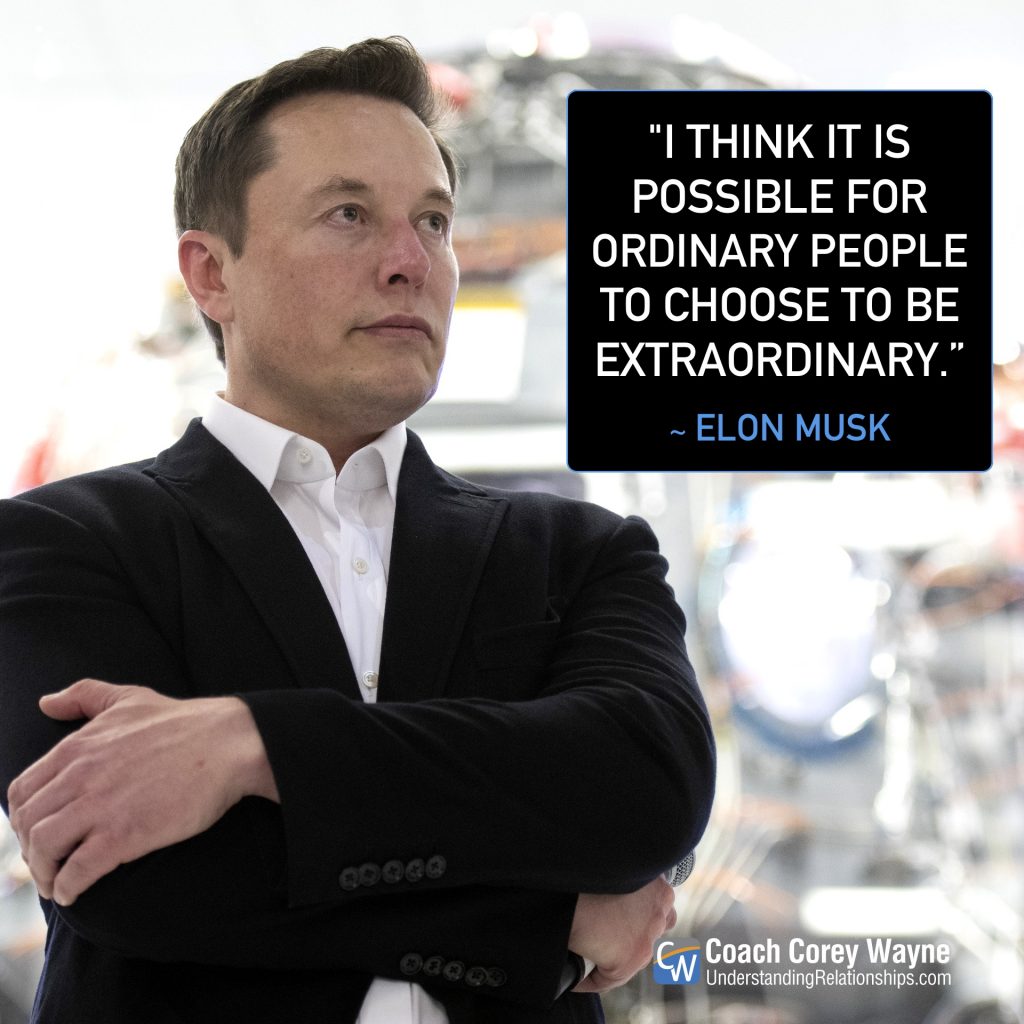
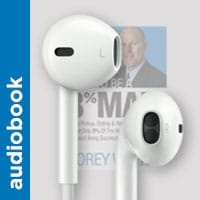


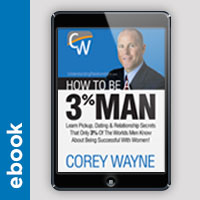





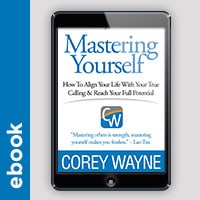
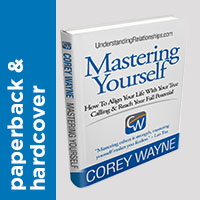


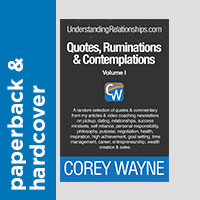
JACO VD WALT says
Awesome article coach ! Its been a while since I have been here. Thank you for changing my life with your book. I get so pissed at all the copycats springing up now, even quoting your words as if it were there own. Fuckem. I wish you all of the best and all of the success you deserve !